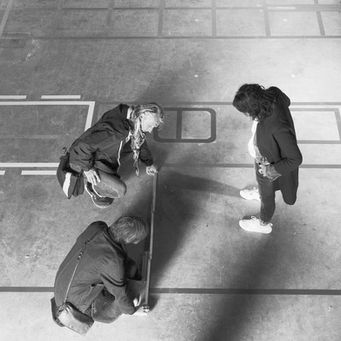COBY MANDERS


ETHIEK
Behind the Work. Me.
Explore, Question, Value, Share, Inspire.
Explore.
Nature's beauty ìs Mindfulness. Art's poetry comforting.
Moving from North to South some years ago gave me totally new perspectives. Although I enjoyed living in the city in times of cultural ratracing, my new environment has moved me elsewhere. The rough nature of ocean and mountains, animals, stars, silence. Vernacular settlements. The freedom of the becoming, simple cyclic time and hughly inventive natives with skills long forgotten. Beldi.
I'm amazed every day.
The cultural as a background in exploring the natural. And now vice versa. Art I was interested in seems to focus on the juxtaposition of people's lives against build environment and build environments against natural surroundings. Do we strive after bridging the gaps which exists here? Or is it the confrontation we look for?
Nature < > Build infrastructure < > Life < > Art < > Build infrastructure < > Nature
Question.
Bridging between Theory and Practice.
After 10 years of excercising in practice my intuition was telling me that the focus of the designing process should not be 'me', architect or 'it', the building, but 'you', cliënt and future inhabitor. I wondered why architects didn't seem to like thinking about this relationship, whereas I believe that it's the essence of developping good projects, not only beautifull buildings. 'What is Human Architecture?' was my topic in a literature study for the University of Antwerp. The findings of this study were further developed in a new definition of the notion 'Nearness'* which builds on a theory of the relationship between designer and cliënt.
''In other fields people test their intuitions rigorously before they use them or make them public, whereas architects just build their intuitions; in addition, in these other fields these intuitions are based on knowledge.'' Amos Rapoport
Value.
Life. Ethics over Image. Dream and Act.
I have a great urge to improve lives and processes which depend upon life, with respect for nature. Because nature is life and life is bigger than architecture. I acknowledge the value of human life as a part of nature; the condition for all spatial activity. I don't sell content, I serve it. Because every act of design has to be valid, responsive and responsible.
I think of my projects as generous. Like a tree they grow dependent on their specific clients and their needs and dreams and the geographical context. I believe this design approach contributes to physical and mental wellbeing and a healthier world.
'' By repeating very simple rules, the tree creates a very complex order. But a tree also decides its own specific form as it grows. A tree decides its shape in response to its surroundings. A tree is always open toward the environment.'' Toyo Ito: Generative Order
Share.
Dialogue to Develop. Guide, not Dominate.
In twenty years of excercise I learned a lot. After a literature study on 'What is Human Architecture?' I wondered about the knowledge on and the position of the cliënt/user/commissioner being still largely absent. With these findings I explicited my conscious approach towards cliënt's learning and change processes. Because change is involved in every encouraging design process.
To succeed I choose for an open attitude; first I listen, then I talk. In this way I see myself as a game dealer between your needs and wishes and my knowledge and experience. When we open up for the unexpected in dialogue, design solutions can surprise instead of only measure up.
''... any architecture of nearness* implies the dynamic involvement of its inhabitant(s) not after, but before space(s) are designed.'' Karen Embrechts, Coby Manders, Inge Somers. Paper Nearness*, Wor(l)ds of Interior, Polytechnico Milano, 2010
Inspire.
Design for Life. Less allòws More.
Architecture is generously open infrastructure. When time goes by, daily rythms on the short term and changing life fases on the longer term, can find refuge in space. From a diverse and gradual arrangement of the private/public to a variable organization of functions: people can arrange their needs and develop through time. By defining and building less, the build canvas allows people to enter, re-arrange in time and grow.
''…in the name of empowering others. In Bruno Latour's terms, critical attention is shifted from architecture as a matter of fact to architecture as a matter of concern. As matters of fact, buildings can be subjected to rules and methods, and they can be treated as objects on their own terms. As matters of concern, they enter into socially embedded networks, in which the consequences of architecture are of much more significance than the objects of architecture...'' www.spacialagency.net
''The idea of things that have nothing to do with me as an architect taking their place in a building, their rightful place – it’s a thought that gives me an insight into the future of my buildings: a future that happens without me.'' Peter Zumthor, Atmospheres (2006)




